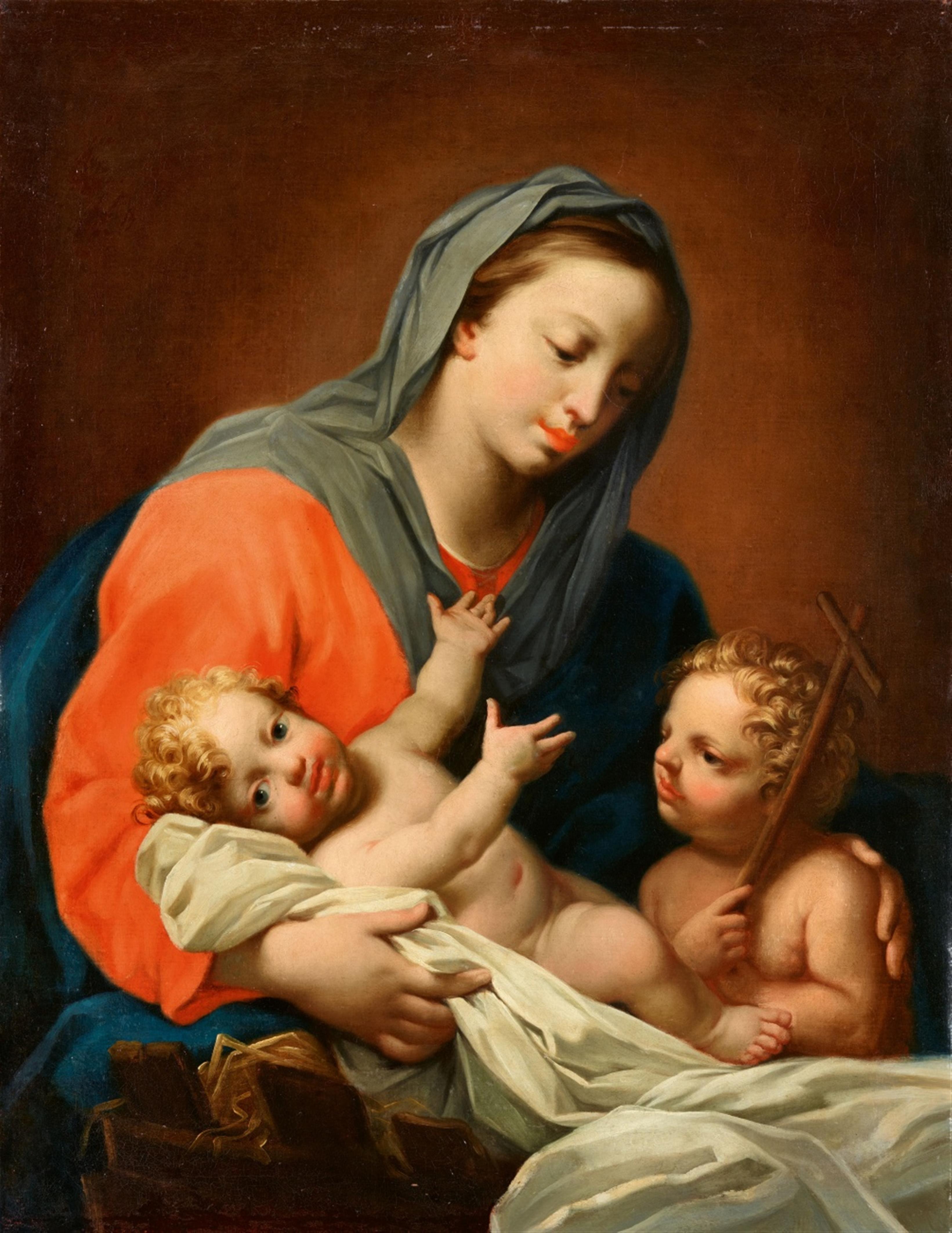Jacopo Amigoni
The Virgin and Child with Saint John the Baptist
Oil on canvas (relined). 88 x 68 cm.
Jacopo Amigoni was one of the most influential proponents of the Rococo style in Europe. In Germany, all Venetian painting during his era was referred to as “stile Amigoni”. Due to lack of documentation, neither the date of his birth nor his death can be securely ascertained. Depending on the author, his place of birth is listed in literature as either Venice or Naples, and Peter O. Krückmann recently suggested Lombardy (see: Von Venus beschützt. Jacopo Amigonis Fresken im Neuen Schloss Schleißheim, Munich 2011, p. 25). The first secure documentation available is found in the “Fraglia” of Venetian painters, where Amigoni is mentioned in 1711 with the notice “fora di Venezia” (outside of Venice). As was common among fresco painters, Amigoni began to travel from place to place as of 1717. His travels led him to all the most important courts of Europe, in 1717 he arrived at the court of Prince Elector Max Emmanuel in Bavaria, where he also worked for the Benedictine Abbey of Ottobeuren, he resided in England from 1729 to 1739, he is recorded in Paris in 1736, and in 1747 he moved to Madrid, where he remained until his death five years later.
Alongside frescoes, Amigoni also painted numerous works on panel and canvas, including mythological and religious scenes as well as portraits, such as that of Tsar Peter I of Russia and the famous “castrato” singer Carlo Maria Broschi, known as Farinelli. The image of the Virgin and Child was among the artist's most popular religious motifs, at least 15 such works are recorded. However, versions including the young John the Baptist are comparatively rare. Alongside the present work, only two further examples are known to exist: One in the Alte Pinakothek in Munich, and one in the Terruzzi Collection in Bordighera. Dario Succi dates the present work to the late 1720s, shortly before or after Amigoni's move to England. “After Amigoni began to distance himself from the Baroque Chiaroscuro of his Bavarian years, he discovered a much greater freedom of expression, an elegance of form, and a poetry of emotion which he captured in a luminous colour palette” (Succi, ibid., p. 79, „quando Amigoni, superata la fase del chiaroscuro barocco del periodo bavarese, raggiunge una maggiore libertà espressiva nella eleganza delle forme, nella poetica dei sentimenti, nel brillante cromatismo.“).
Literature
Dario Succi: Il fiore di Venezia. Dipinti dal Seicento all’Ottocento in collezioni private, Azzano Decimo 2014, p. 79, no. 45.

